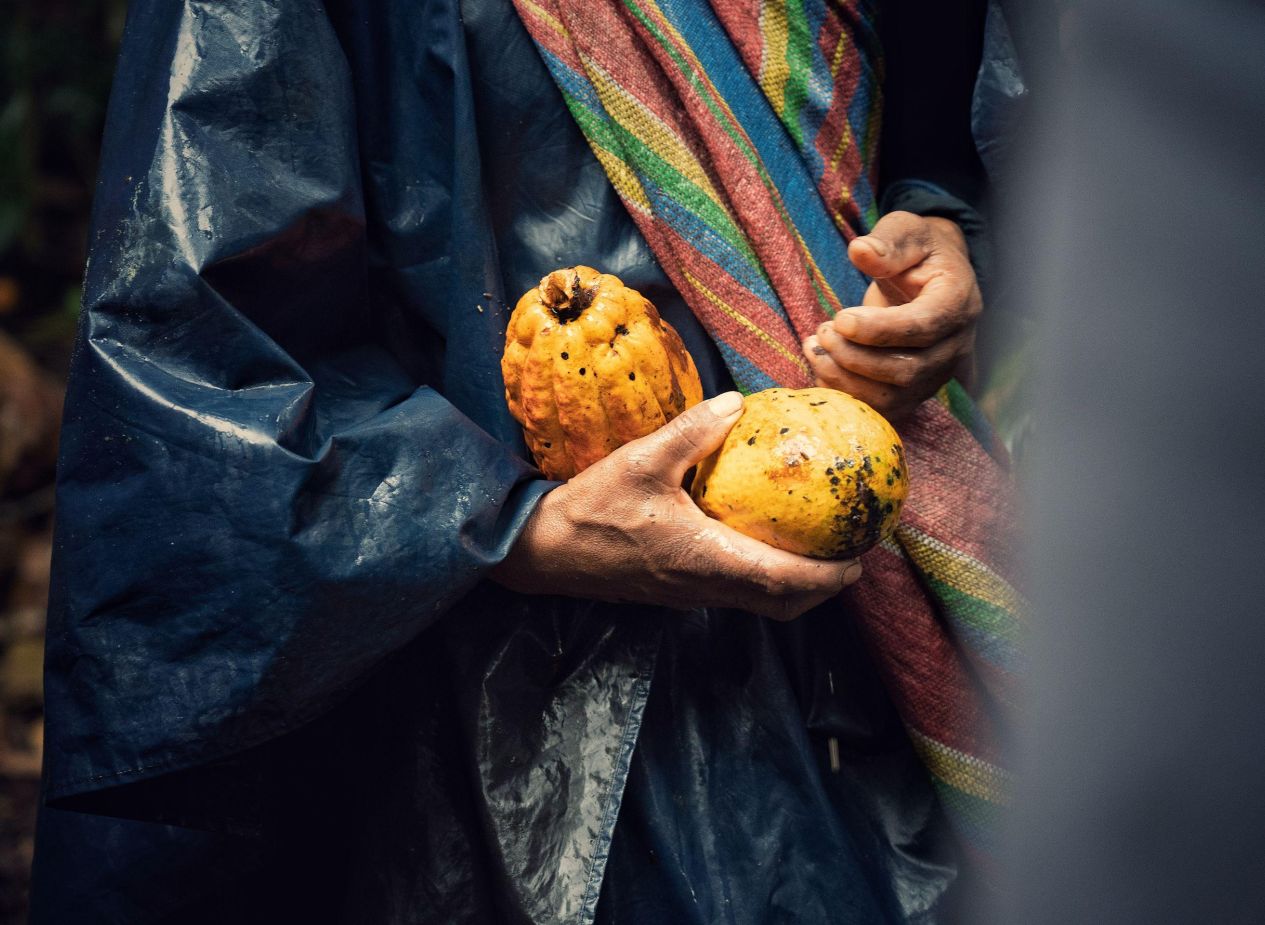Become a JRE-Inside+ member and enjoy exclusive benefits, inspiring interviews, recipes & articles, event infos and more.
- Always up to date with our world of fine dining
- Receive invites to exclusive events
- Get to know our Chefs through interviews and recipes
This article is for JRE-Inside+ members only
Go JRE-Inside+Original Beans - No bean is like the other
Most chefs these days, and more and more of us food lovers want to know where our food comes from - I mean, we really want to know. Where and how did it grow, who harvested it, how did it become such a delicious food? We have picked up these questions in wine shops and coffee roasteries, and now we want to apply them to everything from apples to cheeses. So why then are most of us taking chocolate for granted?
Don’t worry if you haven’t dug deeper yet into where your chocolate comes from. Even those of us who think of themselves as experts are just starting on the journey. For more than 10 years now, the Original Beans team has ventured into the planet’s remote rainforests to source the world’s rarest & fairest cacao beans. We have seen and learned an awful lot about cacao. Most excitingly, we have learned that there is still so much to learn about a tree and food scientifically called - true story! - “food of the gods”. We are all discovering chocolate anew.
To give an example: you might have heard of Criollo, Forastero, Trinitario, the holy trinity of cacao beans. As concerns genetics, biology, chemistry, and thus flavour of cacao, the cacao trinity can safely be put into the dustbin of history. Instead, have a look at the map below of the Amazon basin. Scientists are using Bayesian statistics and computer simulations to infer 10 clusters of distinct cacaos in the Amazon. The broken black lines suggest geological features called paleo arches which may have played a role in stopping the gene flow among the clusters and thus kept them distinct. Do they look different? Of course. Do they taste different? You bet!

Industrial candy companies use industrial cacao beans and blend many different beans together during the production process. In our craft chocolate industry, we treasure and celebrate the unique characteristics of each bean varietal. At Original Beans, we go to extraordinary lengths—and distances— to find previously undiscovered, forgotten and tucked away rare varietal cacao beans and perfect them for our chocolates.
But which then is the mother of all beans? Where was cacao first cultivated? Legend has it that the Olmecs and Mayans were the first and the Original Beans Zoque 88% pays homage to this 4,000 year old tradition. However, we now know that drinking chocolate was probably consumed already around 5,500 years ago on the Amazonian border between today’s Ecuador and Peru.
Following another trail of traits, several cacao scientists have arrived even further South, in the heartland of the Inca empire: Cusco. Here is where Original Beans source the Chuncho beans for Cusco 100%. Ancient origination, high fat-content, and a unique breadth of aromas suggest that Chuncho cacao could be the mother of all fine-flavour cacao. It definitely is worth being celebrated in the single ingredient chocolate we make from it.
“Chuncho” (= “from the jungle”) cacao is native to the Urubamba valley in the Cusco region in Peru, just miles away from the Inca citadel of Machu Picchu. Reports exist on the trade of cacao beans by the local Matsigenka Indians with the highlanders even before the Inca Empire. This tribe seems to have always had a special interest in consumption of fruit pulp and juice from the Chuncho cacao trees. A recent survey on Chuncho pulp and bean aromatic traits of 226 of such trees disclosed 68 unique mostly multi-aroma profiles. As cacao scientists Eskes et al. write in 2016: “(We conclude) that strong aromatic trait selection pressure by “Matsigenkas” Indians’ during evolution and domestication is responsible for the diversity disclosed in Chuncho cacao.” In other words: thank cacao growers from centuries ago for some of the most delicious chocolates you will ever taste today.
Scientists are using Bayesian statistics and computer simulations to infer 10 clusters of distinct cacaos in the Amazon. The broken black lines suggest geological features called paleo arches which may have played a role in stopping the gene flow among the clusters and thus kept them distinct.

Cocooned by its Andean terroir, at an altitude of 1,500m, and preserved due to the proud and colourful cacao tradition of local families, the rarest of rare Chuncho cacaos have survived the passage of time in the Urubamba Valley. To this day, our Cusco growers make their own hot chocolate by roasting the beans with cinnamon or orange peels, grinding them in corn grinders and submerging the mixture in water and sugar. In the form of a bar, the Chuncho melts exceptionally well and without any further additions results in a creamy bar with notes of dried flowers and grass and a light finish.
What a discovery - by simply asking where your chocolate comes from. Keep asking the question! The result will be an amazing collection of unforgettable chocolates each bite of which holds an incredible tale from a far-away place. A rare world worth tasting and preserving.
The Chuncho Urusayhua is one of the rarest of rare cacaos, which is why, in 2015, we decided to use its beans for our Cusco 100% chocolate bar.

CUSCO 100%
Mighty cacao Tastes of dried flowers and grass mark the absolute altitude of this rarest of rare Chuncho cacao, a singular offering from the lands of the mighty condor.
